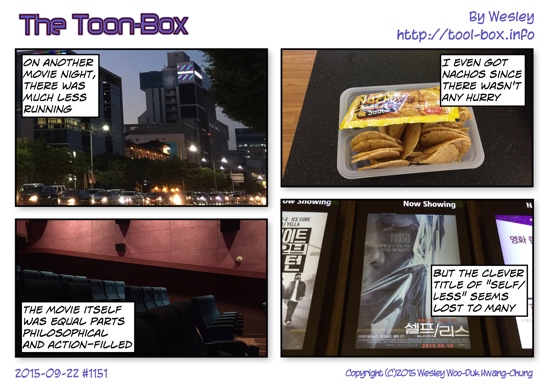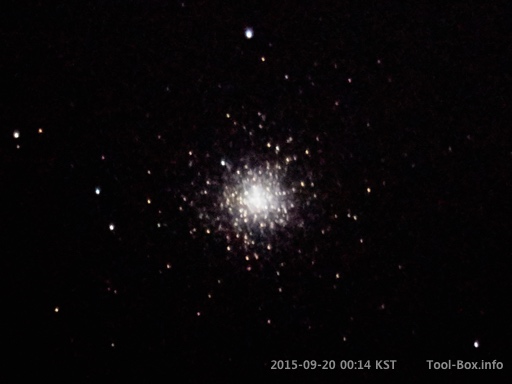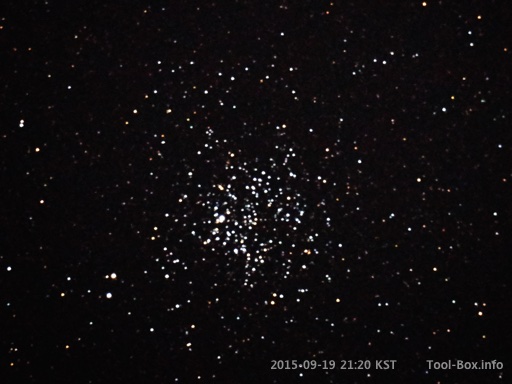Today's "The Toon-Box"
Posted by Wesley on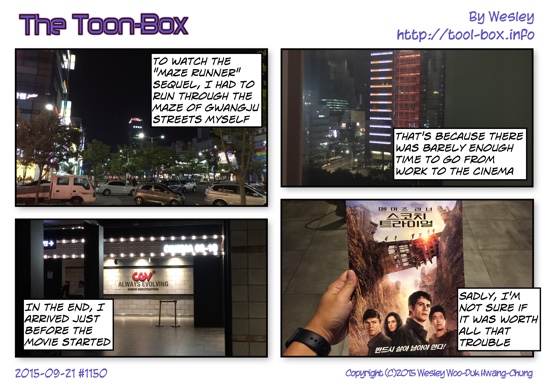
Star clusters: globular and open
Posted by Wesley onNot content to just photograph planets, I tried my luck at catching glimpse of some of the Messier objects that came into the southern view. After trying various high ISO settings, it seemed that ISO 3200 is as far as I could push my A5000 for where I live before too much details were lost. And under this setting, Messier 2 and 11 came out looking fairly well.
Messier 2 is a globular cluster, as it is a group of stars that are tightly bound together in a bright round ('globe') shape. Meanwhile, Messier 11 (Wild Duck Cluster) is an open cluster, a more loosely packed group of stars that still stand out from the background. They seem to be very good examples for A5000 to shoot for their respective category. I've taken photos of several other Messier objects that are star clusters, but these looked the best.
Telescope: Celestron NexStar 6SE
Device: Sony A5000 (prime focus)
Settings: (1500mm) - ISO 3200 - 30s - (f/10)
Filters: None
Location: Naju, Korea
M2: 2015-09-19 23:08 - 09-20 00:14 KST (2 photos stacked)
M11: 2015-09-19 21:20-21:38 KST (2 photos stacked)
Defined tags for this entry: astronomy, Celestron NexStar 6SE, Messier 11, Messier 2, Sony A5000, star, telescope
Today's "The Toon-Box"
Posted by Wesley on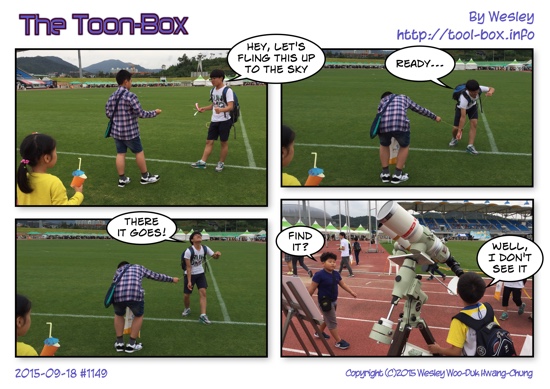
A planet, a satellite, and an asteroid
Posted by Wesley on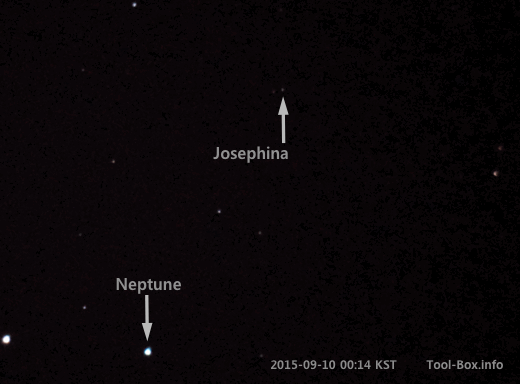
Movement of Neptune and 303 Josephina on Sept. 10, 2015 (19% size)
As Pluto moved toward the western horizon, a planet started to come into the telescope's view through the southern window - Neptune. It was the first time I had seen it in person, but seeing as how relatively dim it is compared to other planets (magnitude 7.8), I decided to take photos the same way I do for stars.
Sure enough, it was caught on the photos as a moving bright spot, next to a 6.9-magnitude star called HD 214686. But I soon discovered that it wasn't the only object moving. A faint dot of about magnitude 13 was moving considerably faster than Neptune. Given the brightness, it had to be a small but known celestial object.
Consulting the minor planet database revealed the object to be 303 Josephina, an asteroid from the main belt with a diameter of about 100km. Out of pure coincidence, I had caught a planet and an asteroid together on several photos.
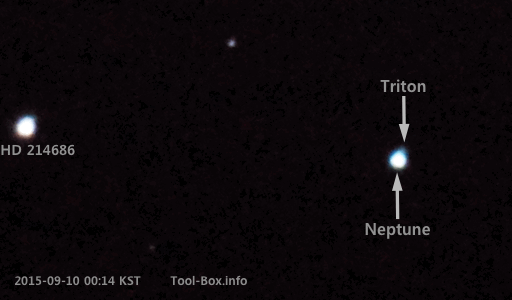
Neptune and its satellite Triton as it moves in the sky (50% size)
But the surprise didn't end there for me. I noticed that Neptune either had a bump or a small dot next to it. It turned out that it was Triton, by far the largest satellite of Neptune with apparent brightness of magnitude 13.5. Photographs taken a day apart clearly shows its changing position relative to the planet, as well. So thanks to the long exposure photography, I was able to take a planet, a satellite, and an asteroid all at once.
Here's the full version of the final frame of the animation, if you want to see it.
Telescope: Celestron NexStar 6SE
Device: Sony A5000 (prime focus)
Settings: (1500mm) - (f/10)
Filters: None
Location: Naju, Korea
#1: ISO 800 - 20s - 2015-09-10 00:14 KST
#2: ISO 800 - 20s - 2015-09-10 01:12 KST
#3: ISO 800 - 20s - 2015-09-10 02:34 KST
#4: ISO 1000 - 30s - 2015-09-10 23:28 - 23:30 KST (3 photos stacked)
#4: ISO 1000 - 30s - 2015-09-11 00:32 - 00:37 KST (2 photos stacked)
Defined tags for this entry: asteroid, astronomy, Celestron NexStar 6SE, Josephina, Neptune, planet, satellite, Sony A5000, telescope, Triton
